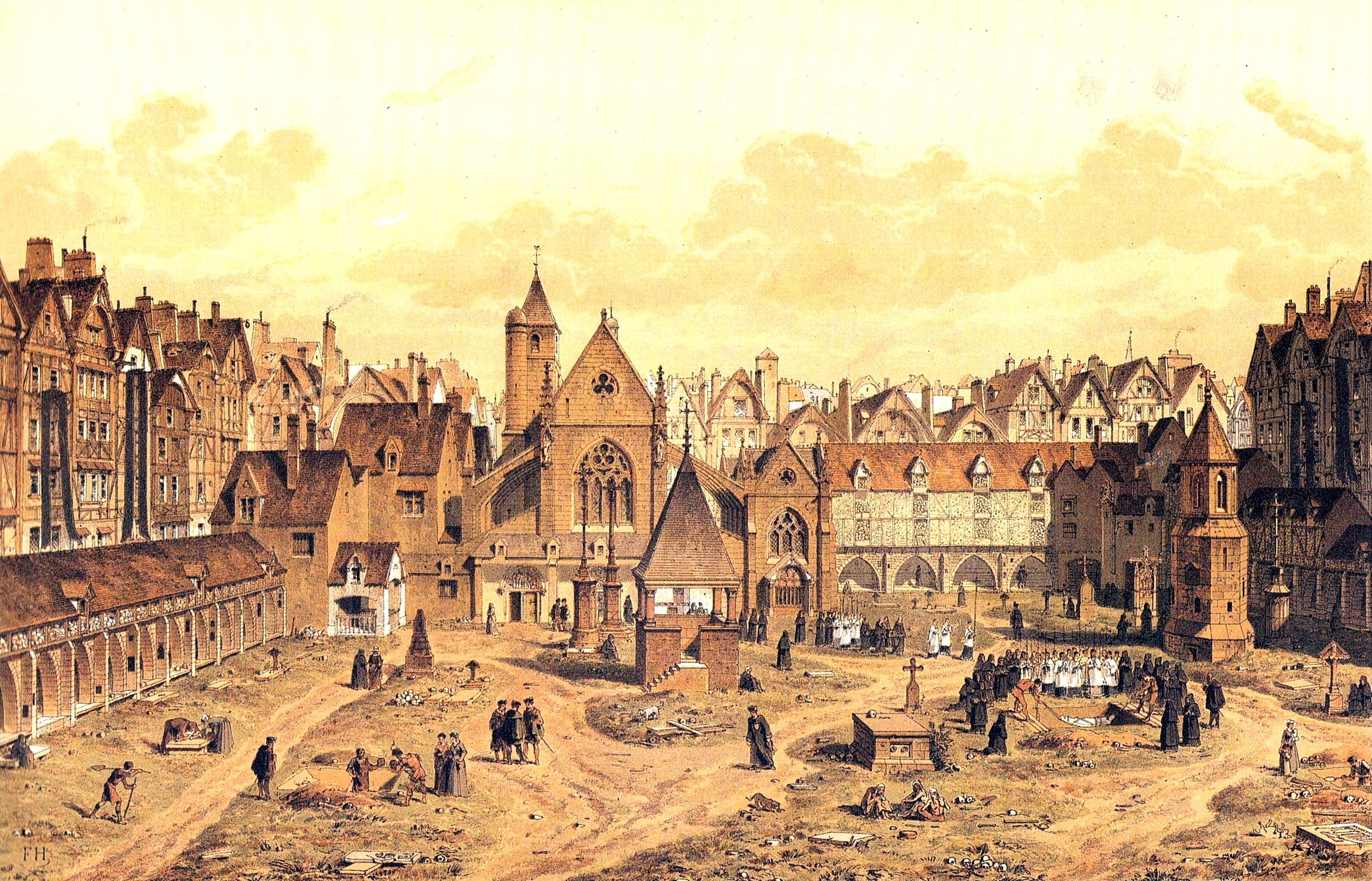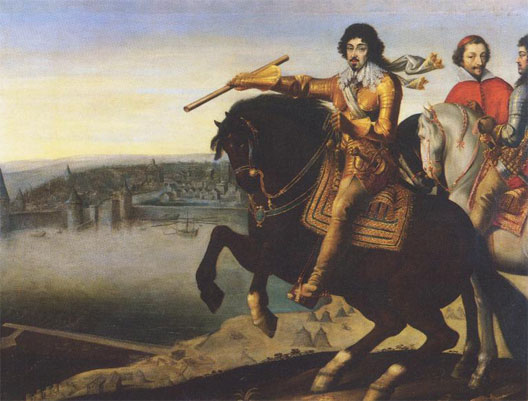Ice skaters on the Seine in 1608
It's now August of 1624 in my H+I campaign, but I must remember this picture for when winter comes back around. I love the idea of skating on the Seine. On the one hand it looks very prosaic and peaceful, on the other it reminds us that the 17th century was in the middle of a Little Ice Age so it was significantly colder in Europe then than it is now. Additionally I like the idea of the PCs slip-sliding on ice as they try to fight a bunch of adversaries. I envision this like this duel, but with more fighters.
The infamous frozen river duel from "The Four Musketeers: Milady's Revenge" (1974)
This picture is from the Wikipedia article on 17th century Paris. Every now and then I like to provide links that I find useful for GMs. These four links provide information and some great pictures for historical Paris.
The first is a general overview. It is followed by specific links by century. The links by century have a level of detail that is useful for an historical campaign without being overwhelming. While historians and pedants will want even more detail this will be sufficient to get most GMs started creating a setting for historical fictional campaigns. The tables of contents will give a good idea of the sorts of information as well as a hint at the level of detail that these links contain.
Contents for Paris in the 17th Century
- 1 Paris under Henry IV
- 2 Paris under Louis XIII
- 3 Paris under Louis XIV
- 3.1 Turmoil and the Fronde
- 3.2 "The new Rome"
- 4 The city grows
- 5 Parisians
- 5.1 Beggars and the poor
- 5.2 Charities - Renaudot and Vincent De Paul
- 5.3 Thieves and the Courtyard of Miracles
- 6 City government
- 7 Industry and commerce
- 7.1 Royal manufacturies
- 7.2 Craftsmen and corporations
- 7.3 Luxury goods
- 8 Religion
- 9 Daily life
- 9.1 Public transportation
- 9.2 Street lights
- 9.3 Water
- 9.4 Food and drink
- 9.5 Cabarets
- 9.6 Coffee and the first cafés
- 9.7 Processions, carrousels and fireworks
- 9.8 Sports and games
- 10 Press
- 11 Education
- 11.1 Academies
- 11.2 University
- 11.3 Primary education
- 12 Gardens and promenades
- 13 Culture and the arts
- 13.1 Literature
- 13.2 Theater
- 13.3 Comédie-Française
- 13.4 Music and opera
- 13.5 Ballet
- 13.6 Architecture
- 13.7 Painting and sculpture
- 14 Chronology
- 15 References
- 15.1 Bibliography
- 15.2 Notes and citations
Here are a sampling of some other pictures. I especially like color drawings and paintings, that show what the city looked like.

Hotel_de_Ville_Paris_Hoffbauer_1583
https://upload.wikimedia.org/wikipedia/commons/e/ea/Hotel_de_Ville_Paris_Hoffbauer_1583.jpg
I particularly like this picture because the lower left foreground gives a clear illustration of the weird pier-like projection. I think it is a water mill, but can't recall off the top of my head. On the maps of the period it looks like someone started a bridge and never finished it. Here, see what I mean.
The Place de Greve and the Hotel de Ville are at the left, the Pont Notre Dame at the bottom, and the unusual object is in the middle of the picture. See how it looks like another bridge like the Pont Notre Dame that was started and never finished. It looks like a 16th century version of the infamous Bridge to Nowhere. But it's not.
This picture gives a better idea of what a water mill looked like and how it worked. Notice the wheels below the houses and bridge at the lower center and right of the painting.
The Cemetery of the Saints-Innocents, the largest in the city, in 1550. (19th century engraving by Hoffbauer)
The Cemetery of the Innocents was incredibly gross and creepy. Bodies buried on top of bodies. It got so crowded that they created galleries where they stacked up bones to make room for even more burials. And disease. And smells. The miasma was like a D&D Cloudkill...but in reality. What would make a better setting for a confrontation with the big bad villain as the PCs try to stop a blasphemous ritual or prevent the villain from unearthing some terrible relic. Make the villain a necromancer and the adventure practically writes itself.
Louis XIII and Cardinal Richelieu in 1628
When D'Artagnan is challenged to a duel by each of the Three Musketeers in turn, the second duel, with Porthos, is to take place "behind the Luxembourg." What Dumas was referring to what was the Luxembourg Palace and gardens that were built by King Louis' mother, Marie de' Medici to recall her native Florence. Presumably by "behind" Porthos means in the gardens.
View and Perspective of the Luxembourg Palace and Gardens by Israel Silvestre drawn 31 December 1648






No comments:
Post a Comment